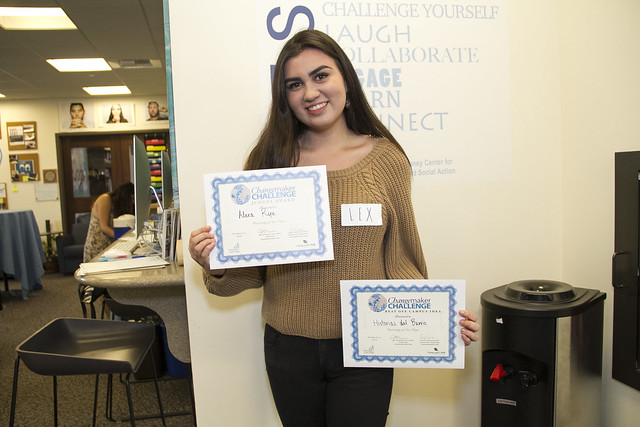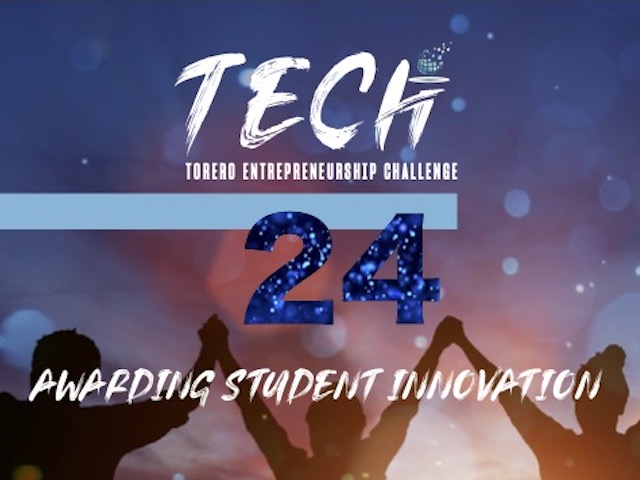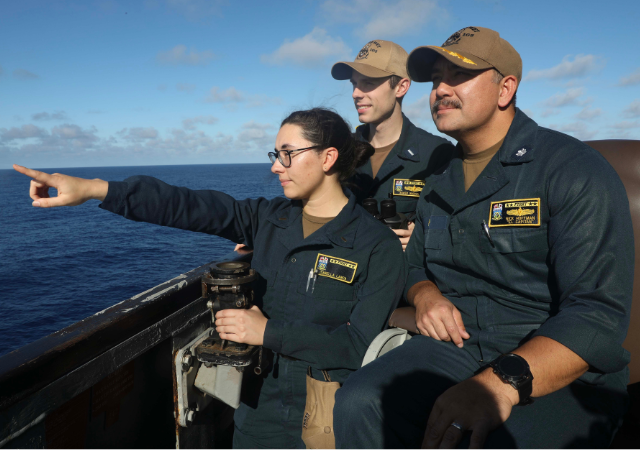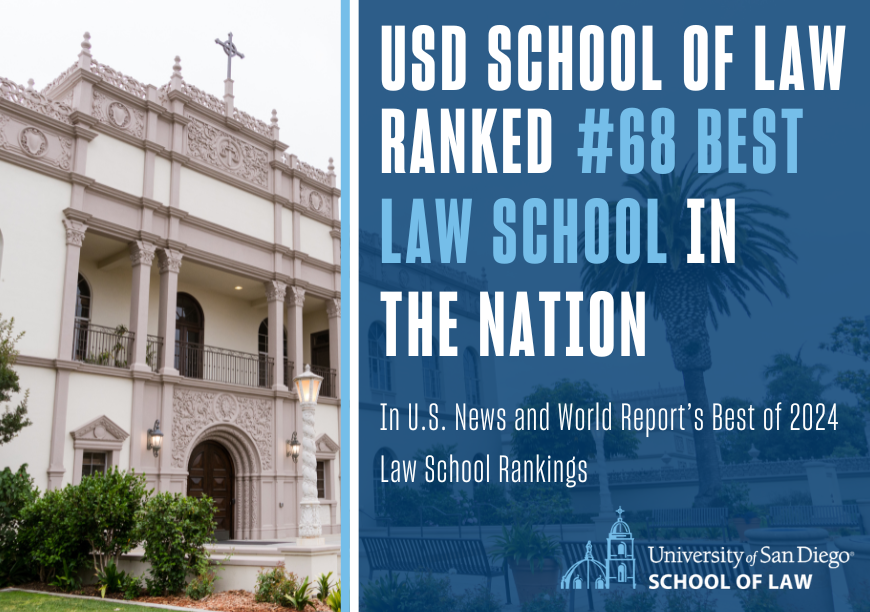Community Projects Shine Amongst Changemaker Challenge Winners
Two projects — documentation and preservation of historical knowledge and culture in the Chicano community of Barrio Logan and an activity in which Linda Vista children draw their community to visualize it in map form — were the big winners in the 2017 University of San Diego Changemaker Challenge's video vote competition.
First-year Torero Alexa Ripa’s “Historias del Barrio” project, and “Children’s Map,” created by seniors Debby Romero, Natalie Hernandez and Britte Cornish, finished first and second in voting, respectively, among seven finalists. The top two entries combined for more than 2,600 votes and about $4,500 of the $6,000 total prize money available. Both also received a separate $1,000 Judges' Award, which will be paid based on progress made in the spring. Ripa’s project was cited as best off-campus idea while Romero, Hernandez and Cornish were recognized for the best original idea.
A third entry, “EBT Cards,” by graduate student Tanisha-Jean Martin, seeks USD to accept EBT cards for student purchases of on-campus food items. While the finalist received 100 votes and $173.56 of the prize money, Martin’s idea was selected as the third Judges Award for best on-campus idea.
All finalists received money based on video votes received on the USD Changemaker Hub Facebook page. Four finalists who did not receive a Judges Award, with vote totals and prize money, were: “Unleashing Hispanic Potential,” Bianca Alvarado and Jessica Aparicio, 289 votes, $501.59; “Test Tutors,” Mirian Guirgis and Sara Skoglund, 236 votes, $409.60; “Family First and Man Up,” Brian White, 139 votes, $241.25; and “Making Change at USD with HOST,” Max Steinhauer and Tommy Hunt, 106 votes, $183.97. The four finalists, while they did not receive a Judges Award, are eligible to receive $500 each by continuing their project in the spring.
"This is a chance to make an impact in your community. Through the Changemaker Challenge we try to activate it," said USD Changemaker Hub Director Mike Williams, who announced the award and money results at a Dec. 8 luncheon.
The Changemaker Challenge had a new social justice theme this year — Equity and Access: Education, Housing and Healthcare, devised by the Changemaker Challenge Council.
“We believe this year’s finalists presented a deep understanding of the topic and we were excited to see so many first-year students enter the Challenge as well as having graduate students apply,” said Juan Carlos Rivas Espinosa, USD Changemaker Hub assistant director.
There were 91 total entries — 10 individuals, 81 teams and 74 were done as part of a course or a Living Learning Community. As a result of the latter, the bulk of Changemaker Challenge entries included first-year students (206 of the 264).
Historias del Barrio
Ripa’s project fit the bill as both an incoming student, but also as a student with the drive and passion to do changemaking work.
Her focus on Barrio Logan and preservation of its culture through storytelling is a healthy component. Inspired by her Introduction to Ethnic Studies course and Ethnic Studies Professor Alberto Pulido, PhD, who is active within the Barrio Logan community, she wants to do a film documentary and show it on the USD campus. Her hope is to educate her fellow Toreros.
“Awareness would be the very first place to start,” Ripa said. “The thing I loved is when I asked what (USD students) knew about Chicano heritage and what they knew what was going on in Barrio Logan, everyone asked ‘what are you talking about?’ and ‘where is Barrio Logan?’ and ‘who are the Chicanos?’ But they wanted to know more. I loved that and thought it was valuable. No one brushed me off and no one told me this doesn’t matter. By raising awareness, students show they do care and there’s a demand for more education about it and knowledge.”
She added that her idea goes beyond awareness. “While I don’t know what I want the documentary to look like in totality, I do want to put in some action steps and what can we do about it. We’re all about inclusion, but the issue comes when the narratives and histories of Chicanos are diluted.”
Ripa said she will be accompanying Dr. Pulido soon to meet community members and work on her project next semester. “The sooner the better,” she said when asked about a timeline for the documentary.
Children’s Map
"Children's Map" is a response to Romero's four years of work as a bilingual tutor at Linda Vista Elementary School through a connection to USD’s Mulvaney Center for Community, Awareness and Social Action.
"There's a pattern I've been seeing with my students in regards to their future. I try to prepare them to think outside of their environment. The most common answer when I asked them, ‘what do you want to be when you grow up?’ is very limiting," Romero said.
She noted a particular bright young boy who looks up to his father. Romero asked the boy if he could see himself as a city council person or politician. His reply, because he wants to be like his father, is ‘I want to work at Domino’s.’ “It’s a noble answer,” Romero said, “but this was limiting themselves based on their environment. Children might not see themselves going to college, but in prison so why try at school? That resonated with me in Linda Vista.”
Natalie Hernandez included USD’s recent No. 1 ranking as the Most Beautiful Campus in the Changemaker Challenge video. “We all tend to stay in the bubble. We see the beauty around us, but we tend to not make a left turn (toward Linda Vista), instead it’s right toward the beach. We wanted to emphasize that. Having the children draw what they see means the story is being told by members of the community.”
Added Cornish, whose past experience of working with homeless youth, was something that connected her to working on the Children’s Map project. “It’s crazy how much of a voice a kid can have. They’re present, they have solutions and yet they are the most innocent, real and unbiased. It’s simple. Oftentimes, when adults have ideas, solutions can be money or politically based.”
Romero said work will be done on the project this spring. “We want to make it a reality. We’re all passionate about children and was we want to make a difference.”
— Ryan T. Blystone




